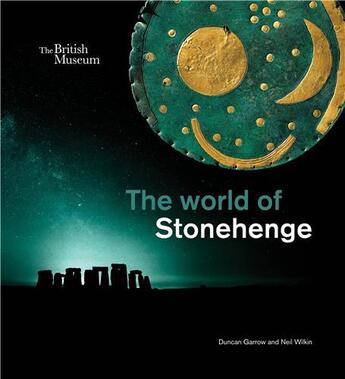Résumé:
Stonehenge is one of the best known, but most misunderstood, monuments in the world. Contrary to common belief, it was not a static, unchanging structure built by shadowy figures or druids. Rather it represents the cumulative achievement of numerous generations who were woven into a complex and... Voir plus
Stonehenge is one of the best known, but most misunderstood, monuments in the world. Contrary to common belief, it was not a static, unchanging structure built by shadowy figures or druids. Rather it represents the cumulative achievement of numerous generations who were woven into a complex and widespread network of cultural interactions, environmental change, and belief systems. This publication, which accompanies the first exhibition about Stonehenge ever staged in London, uses the monument as a gateway to explore the communities and civilizations active at the time of its construction and beyond, between 4,000 and 1,000 BCE.
Recent archaeological findings regarding the origin of Stonehenge's striking 'bluestones' have re-ignited interest in this ancient wonder, the people who built it, and the beliefs they held. Through the 'iconic' structure, spectacular objects of precious and exotic material and more humble, personal objects, authors Duncan Garrow and Neil Wilkin examine the dramatic cultural and societal shifts that characterized the world of Stonehenge, including the introduction of farming and development of metalworking.
Covering a period of thousands of years, the publication traces the appearance of the first monuments in the landscape of Britain around 4,000 BCE, the arrival of the bluestones from the Preseli Hills in Pembrokeshire 1,000 years later, all the way up to a remarkable era of cross-Channel connectivity and trade between 1,500 and 800 BCE.
Through a new study of the enigmatic and beautiful objects made and circulated during the age of Stonehenge, connections are charted in the shared religious practices and beliefs of communities from across Britain, Ireland, and continental Europe. The presence of other stone and wooden circles hundreds of miles from Salisbury Plain - including Seahenge, discovered on a beach in Norfolk in 1998 - is further evidence of these shared ways of thinking.
At a critical moment in the narrative of Stonehenge, around 2,500 BCE, the significance of the cosmos and the heavens expressed through the construction of stone circles and megalithic passage tombs began to wane and portable objects gained increasing importance. This key transformation is demonstrated by a highlight object from Germany: the Nebra Sky Disc, a bronze disc inlaid with gold symbols believed to represent the Sun, a crescent moon and the Pleiades constellation. More modest items found in tombs, burials and settlements are no less important in shedding light on the development of ideas relating to identity, religious practices, and relationships between the living and dead.
Monuments such as Stonehenge cannot be understood in isolation. Stonehenge was not always a static, monolithic structure: over generations it was adapted and added to by communities that changed and developed the landscape on which it still stands today.














